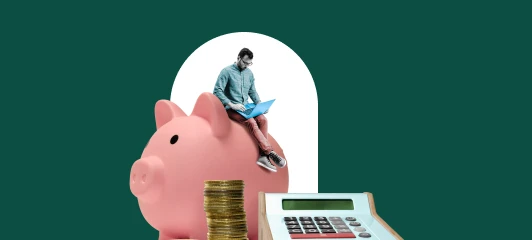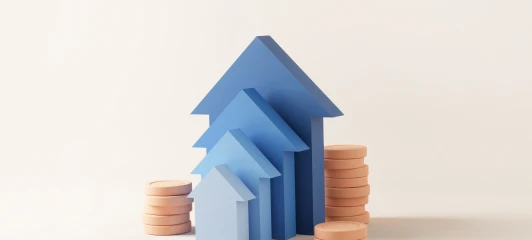Dirt Cheap
There appears to be a common belief that Australian equities are "expensive" as the ASX200’s price/earnings multiple is now in line with the MSCI index. I don't share that view, and believe that corporate Australia deserves its "global market multiple"; many companies deserve a premium to their global peers.
On a 10-year view, we have the best "total return" market in the world, and that appears likely to continue. So why then does having the same p/e as the rest of the world make Australia "expensive"?
In fact you could argue a premium is justified, particularly given the unique characteristics inherent to Australian industry structure, and inherent to Australian investment markets. Most of our companies operate within "cosy domestic oligopolies", while no other equity market in the world is underpinned day in, day out, by compulsory superannuation flow.
Some believe that 35% of all Australian equities are held by foreign investors, yet I think that percentage is overestimated, because foreign investors have been net sellers of Australian equities for five years now, domestic investors being the buyers. I'd be surprised if more than 25% of all Australian equities are held by foreign investors, and I'd be surprised if these investors all think a market multiple for Australian equities is a "sell" trigger.
Some of our competitors also believe that compulsory superannuation shouldn't play a role in influencing the overall p/e of the market, yet that's a point I strongly disagree with. Compulsory superannuation flow, in a full employment environment, is a hugely powerful medium-term influence. Compulsory superannuation is funding the growth and outperformance of corporate Australia. It is funding offshore expansion, it's funding local consolidation (lifting returns), and it is bringing forward critical infrastructure upgrades. Compulsory superannuation investment is playing a very big role in the continued outperformance of the Australian economy and, in turn, the outperformance of corporate Australia.
Many people believe that global markets offer better value now, and are encouraging more direct offshore investment. It won't happen. I can't see the day soon when I ring the AMP and say, 'I reckon Taiwan Semiconductor looks cheap’. The Australian market will be driven to a 10–20% premium to the world before this occurs. Everyone forgets the power of franked dividends to domestic super funds, and until the grossed up dividend yield of the local market becomes unattractive, domestic equities will remain the asset class of choice.
LOWER DISCOUNT RATES
While Australian p/e multiples have been rising, I believe it's more to do with investors using lower long-term discount rates in their modelling. Investors are using lower long-term discount rate assumptions; while at the same time corporate Australia is lowering its own risk profile by aggressively lowering gearing ratios. I think you are seeing a total "risk adjustment" going on, to reflect the fact that Australian equities simply are not that high risk. The grossed-up dividend yield of the market remains higher than the unfranked 10-year government bond yield.
The "illiquidity" argument can no longer be used against Australian equities, nor can the poor corporate governance argument. As the Qantas example we wrote about on Friday showed, we have world-class management in corporate Australia, and the "lack of management depth" argument can no longer be used against Australian equities.
I think the argument that "Australian equities are expensive because they now command a global market multiple" is simplistic, and flawed. Yet, it's typical of the consensus cynicism that overrides the asset class and will ensure that we continue to track higher through time.
When all around you are trying to brainwash you with these arguments, just remember the following points. Fourteen years of uninterrupted GDP growth, and GDP growth being revised up again. Record business investment spending. Double-digit earnings growth ' again. Record low average gearing levels. Record high average interest cover. Record dividend payments and reinvestment. Equity yield still far more attractive than unfranked fixed interest yield. The mergers and acquisitions cycle accelerating. Record superannuation returns and inflows. Full employment. World-class management.
Yet again over the weekend the press, institutional investors, and broker commentators were all sounding a cautious tone, and I think I was referred to as an "equity market cheerleader". I'm not sure I have the legs for cheerleading, but it is amazing the press will criticise the few strategists who actually remain positive.
MATERIALS REMAIN GROSSLY CHEAP
No other asset class, local or global, will beat the returns Australian equities will offer in 2005-06. We will see 10–15% earnings per share growth, with dividend yields approaching 4% fully franked. No other equity market in the world is more directly leveraged to the Chinese growth engine, or the recovering Japanese growth engine, yet somehow, our "materials" sector does not command a p/e premium to its global peers. The current financial year will be one of p/e expansion for our leading materials stocks, particularly bulk resources. BHP Billiton will head to $30, while Rio Tinto will head to $65, and that in itself will be enough to see the ASX200 above 5000 points.
There was an amazing quote recently on the front page of the Australian Financial Review, from a global broker economist who said: "There is no hope for big price rises in export commodities, so we are going to need something else to fill that gap."
No hope for big price rises in export commodities? That's a huge call, and highly unlikely to be the case.
IRON ORE
The fundamentals of the iron-ore market continue to remain very strong after the recent comments by the Brazilian miner CVRD and the ongoing positive outlook for global growth.
CVRD chairman Roger Agnelli, said in a London conference, that he expected the iron-ore price to rise more than 40% in 2005-06. This follows Fabio Barbosa, the financial director, commenting after the first-half result, that the company was having trouble supplying existing customers and that this year’s 71.5% rise in the iron-ore price had been, "practically, entirely absorbed by the reduction in freight costs" and that CVRD would seek price rises next year. It is worth remembering that last year CVRD stated that it was seeking a 90% increase in the contract price and that few took that figure seriously until the 71.5% rise was subsequently achieved.
Despite Chinese Government efforts to slow the economy, there appears no slowdown in Chinese growth, with the announcement last week that August industrial production was 16.1%, versus expectations of 15.7%, or 16.3% for the first eight months of 2005. This follows the recent announcement of the re-acceleration of second-quarter GDP growth to produce first-half growth of 9.5%. Just as importantly, the Japanese economic recovery continues to gain momentum, with consensus upgrades to 2005-06 GDP growth from 1.5% to 3%.
THE LONG MARCH
Analysts still remain sceptical about the sustainability of Chinese growth and therefore demand for commodities, but it is interesting to reflect on the Hugh Morgan's comments. He says recent history, including that of Japan, shows that as a country's average annual income rises from $US1000 to $US7000, "it also moves through a metal intensity cycle", when it requires maximum quantities of metal to maintain the pace of development. "China has moved about 300 million people through that income growth," says Morgan, and "there's still another billion to go".
BHP chief executive Chip Goodyear recently thought the market was suffering from the "Chicken Little " syndrome, where the consensus opinion was that the sky was falling in, or that the collapse in Chinese growth was imminent. After a recent visit to China, Goodyear observed that not only was there an unprecedented construction boom in apartments being built with BHP steel, but they all had air conditioners. He concluded that even after the construction boom had ended, Chinese demand for energy would remain extremely strong.
Any further concerns about the strength of iron-ore market should be allayed by comments from the president of China's second-biggest steel corporation, Sinosteel, who said he expected Chinese demand to be sustained at more than 300 million tonnes of ore a year for the next decade. To put this in context, this implies that at current production levels, Chinese iron-ore demand alone will account for about 50% of total production from CVRD, BHP, and Rio Tinto, who in turn dominate approx 80% of seaborne global production. That equates to clear "pricing power".
















